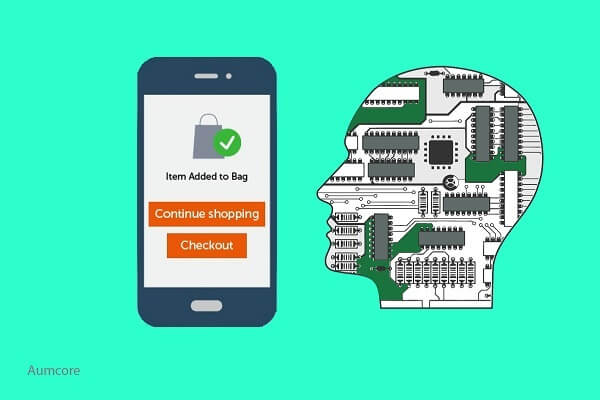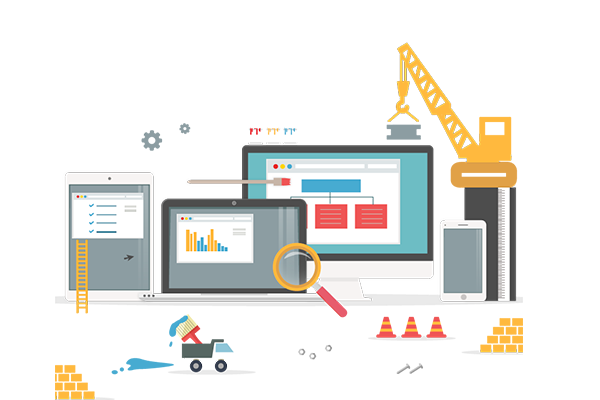From machine learning applications in retail, to intelligent systems in e-commerce, artificial intelligence (AI) is completely changing the digital landscape. Digital advertising is becoming smarter with improved targeting, the digital shopping experience is getting revitalized with tailored recommendations and streamlined transaction, and AI is the catalyst in the middle leading the charge.
On the business side, AI drives revenue growth by allowing us to engage existing customers in more meaningful ways. This increases retention rates, which then increase profits anywhere between 25% and 95%. Through this, targeting and segmenting is also streamlined, something that benefits consumers as well because they see more of what they want, rather than what the retailer wants.
The point being that AI is improving the digital shopping experience for all. Let’s take a look at a couple of examples of AI in retail stores, and AI use cases in retail as well to illustrate this change in detail.
Examples of AI in Retail: How AI Is Improving Shopping
Because AI in retail and eCommerce can be applied across the entire customer journey, many brands are turning to it as a way to stay ahead of competition and appeal to their customer base. Here are a couple of examples:
Chatbots and Shopping Assistants

With an AI shopping assistant in tow, brands can automate sales processes by identifying leads and guiding them across the journey to purchase. These shopping assistants, or chatbots, act as friendly customer service representatives that work 24/7 to identify opportunities and make the most of them. These AI-powered assistants also keep leads engaged, follow up with them later on, and cross-sell once they’ve made a purchase.
For example, Star2Star Communications used an AI-backed sales rep named ‘Rachel’ in 2016 and saw a 30% email response rate within hours, and 24% of their sales afterward were actually influenced by Rachel’s work. Similarly, Boch Automotive used ‘Crystal’, another AI sales assistant, to bolster their sales efforts and illuminate which lead providers to scale up and which to stop using. Not only did engagement and lead quality increase, but they also saw a 60-sale increase per month in one of their dealerships.
Tailored Recommendations
If you’ve ever used Netflix or Amazon, you’re familiar with tailored recommendations made possible by machine learning and artificial intelligence. Every user is different, and the goal of these recommendations is to zero-in on what makes them unique, and then use that information to present them with the products/services they’ll want to make use of the most. For example, Netflix recommends movies or TV shows based on the ones you’ve already seen and rated, and Amazon does the same with their products.
Apart from Netflix and Amazon, 1-800-Flowers.com is another brand making use of tailored recommendations to improve user experience (UX). They launched Gifts When You Need (GWYN) as an AI chatbot and gift concierge that can tailor gift recommendations for each user. It does this by comparing specifics from gifts that were bought for similar recipients in the past, and within two months of launching, 70% of online orders actually happened through GWYN.
Segmentation

Similar to recommendations, segmentation focuses on what makes each user unique. Facilitated by machine learning and pattern recognition, segmentation allows brands to create different personas with unique traits that can be used to target each one differently with incentives they’re more likely to respond to.
For instance, by using segment modeling to divide customer into 60-plus segments, and further mining existing customer information to personalize and customize its messaging process, lingerie retailer Adore Me was able to boost monthly revenue from its data-driven campaign by 15%, and also saw a 22% increase in average order amount.
Contactless Shopping
Easier and faster to use than searching for money, contactless shopping is making cash obsolete. It’s the future of shopping, and we’re already seeing it evolve before our very own eyes thanks to Amazon and Amazon Go, their brick and mortar shop that recently debuted in Seattle, Washington. With checkout-free technology, shoppers can check in through the Amazon Go app, sensors track what they pick up and place in their basket, and once they leave, whatever they got is charged to their Amazon account.
Final Thoughts on Artificial Intelligence Online Shopping and TL;DR
Global spending on AI will grow to $7.3 billion per year by 2022, up from an estimated $2 billion in 2018. Like we covered today, the use of AI in the online world is increasing as more and more brands pair eCommerce web development with AI features that allow them to increase engagement, boost revenue, and better connect with consumers. Here it is again in tl;dr form:
- Artificial intelligence is completely changing the digital landscape
- For example, AI drives revenue growth by allowing us to engage existing customers in more meaningful ways, thereby increasing retention rates and profits
- With AI-powered shopping assistants, brands can automate sales processes by identifying leads and guiding them across the journey to purchase
- Brands can also use tailored recommendations to figure out what makes each user unique, and then use that information to present them with optimal products/services
- Like recommendations, segmentation focuses on what makes each user unique and creates different personas with unique traits that can be used to target each one differently
- Contactless shopping is making cash obsolete while streamlining the whole shopping experience
Don’t forget to get in touch with a creative digital marketing agency if you want to benefit from AI — best of luck!





Tell us your thoughts in the comments